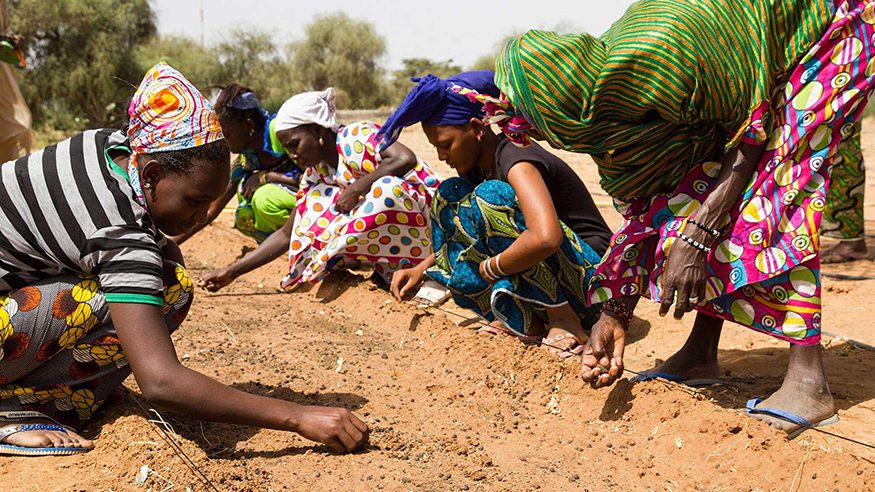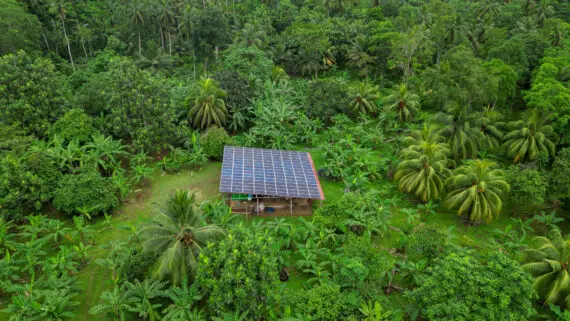Climate change and the many threats it poses have become concerns for almost everyone, and Bread for the World emphasizes that climate change is a major cause of hunger. Efforts are being made worldwide to produce more food and more nutritious food—from research labs to extension services to small farms operating in a variety of climate conditions.
The effects of climate change on hunger were first noticed by people who rely on agriculture to earn a living, particularly people living in the most fragile ecosystems and those from marginalized groups.
One of these ecosystems is the Sahel, a stretch of land that crosses the African continent just south of the Sahara Desert. The Sahel is home to a growing population with few material resources. The World Food Programme (WFP) and the Food and Agriculture Organization (FAO) have designated a group of five Sahelian countries a regional hunger hotspot: Mali, Niger, Burkina Faso, Chad, and Mauritania. With climate change, many parts of the Sahel are becoming much like the Sahara Desert to their north. This is a process known as desertification.
Hunger and severe malnutrition are primarily caused by climate change and armed conflict, which has threatened civilian populations for decades, and, more recently, the economic impacts of the COVID-19 pandemic. As Bread has described, life for most people in the Sahel is a continual struggle to feed their families and maintain modest shelters.
The northern part of the Sahel is sparsely populated, with many people engaged in pastoralism, or herding animals in search of new grazing areas. This migratory strategy is common in areas where the land is unsuitable for farming. Drought poses an enormous risk because livestock rely on rainwater and natural pasture for survival. In turn, the animals provide milk, a vital source of protein—especially for young children, who are particularly vulnerable to malnutrition.
Farming is the main livelihood activity farther south. Here too, drought causes food shortages more frequently than in the past. For example, the most recent harvest of Niger’s staple grain, millet, was 38 percent below the five-year average. A related climate change impact is erratic rainfall, which can disrupt the growth of crops, much like drought or flooding.
One essential component of responding to climate change is developing seeds, other supplies, and agricultural techniques that perform well under the changed circumstances, in order to ensure that farmers can continue to produce food. As Bread pointed out in Confronting Climate Change to End Hunger, such climate-smart agriculture approaches can help reduce the human cost of climate change.
People in the Sahel are well aware of the threat that climate change poses. One highly ambitious suggestion was to build Africa’s “Great Green Wall.” This was originally thought of as a barrier composed of trees, several miles wide and stretching for thousands of miles across the continent. Trees can reclaim land from the desert, or “regreen” it, and prevent further desertification. This is essential to make the land available to grow much-needed food. The original idea was unworkable, but over time, a related approach began to produce results.
The title of a feature article in Smithsonian Magazine summed it up: The Great Green Wall didn’t stop desertification. But it evolved into something that might. Much of the earliest and most successful work to “regreen” or reclaim land has been done by small groups of smallholder farmers, their techniques developed out of necessity. They use simple water harvesting techniques and protect trees that grow naturally on their farms.
Large patchworks of green spaces are an unexpected sight in the Sahel. Mohamed Bakarr, lead environmental specialist for the Global Environment Facility, explains: “It is not necessarily a physical wall, but rather a mosaic of land use practices that ultimately will meet the expectations of a wall. It has been transformed into a metaphorical thing.”
Once local efforts had some visible successes, national governments expressed interest in the project as well. There are now networks and partnerships composed of countries committed to scaling up the work, and the effort has attracted some outside funding.
Progress has been extremely slow. Work has frequently been brought to a halt by fighting in the vicinity. But news from the Sahel often seems to be a litany of problems that appear insurmountable, and climate change “success stories” anywhere on the planet are too rare. The Great Green Wall is a much-needed sign of hope.
Michele Learner is managing editor, policy analysis, with Bread for the World.



